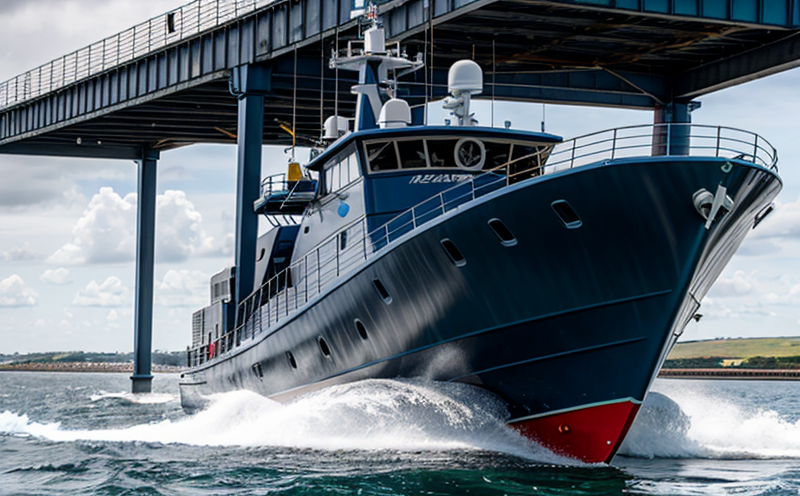ISO 9227 Salt Fog Corrosion Testing of Propeller Materials
The ISO 9227 salt fog corrosion testing is a critical method used to evaluate the resistance of materials intended for use in marine environments, particularly focusing on propellers. This test simulates the corrosive environment that marine equipment encounters during its operational life, thereby ensuring product durability and reliability. The procedure involves exposing samples to a controlled atmosphere rich in salt vapor, mimicking the harsh conditions found at sea. This helps manufacturers understand how their materials will perform under real-world conditions before mass production.
For propellers specifically, this test is essential because they are subjected to constant exposure to seawater and corrosive elements such as salt spray, which can significantly reduce their lifespan if not properly designed or fabricated with corrosion-resistant materials. By conducting ISO 9227 tests early in the development process, engineers can identify potential issues related to material selection and design before committing resources to full-scale production.
The testing protocol requires precise control over environmental factors like temperature, humidity, salt concentration, and exposure duration. Proper specimen preparation is also crucial; this includes cleaning the samples thoroughly, ensuring they are representative of actual use conditions, and avoiding any contamination that could skew results. Once prepared, the specimens undergo immersion or spray cycles according to specified parameters outlined in ISO 9227.
After completion of the test cycle, visual inspections are conducted to assess surface changes indicative of corrosion damage. These observations provide valuable insights into which materials perform best under simulated seawater conditions, guiding future decisions regarding material choice and design improvements. Additionally, destructive testing may be performed where non-destructive methods alone do not suffice.
Understanding the outcomes from these tests allows companies to make informed choices about material specifications, enhancing overall product quality while reducing costs associated with premature failures. Furthermore, compliance with international standards like ISO 9227 demonstrates a commitment to high-quality production practices that meet industry expectations and regulatory requirements.
To summarize, ISO 9227 salt fog corrosion testing plays an indispensable role in ensuring the longevity and reliability of marine equipment by providing early indicators of potential performance issues. Through rigorous experimentation under controlled conditions, manufacturers can optimize their designs and select appropriate materials for optimal durability against harsh environmental elements.
Applied Standards
| Standard Number | Description |
|---|---|
| ISO 9227:1996 | Method for determining the resistance to atmospheric corrosion of non-ferrous metals and alloys in salt fog environments. |
| ASTM B117-03(2018) | Standard Practice for Operating Salt Spray (Fog) Apparatus. |
| EN 16954:2018 | Method for the determination of resistance to atmospheric corrosion in a salt fog environment of non-ferrous metals and alloys used in shipbuilding. |
Benefits
- Identifies suitable materials resistant to salt spray corrosion early in development stages.
- Saves time and resources by avoiding costly failures during production.
- Ensures compliance with international standards, enhancing market access.
- Promotes sustainable design through informed material selection.
Competitive Advantage and Market Impact
- Establishes credibility among clients and stakeholders by demonstrating adherence to recognized industry benchmarks.
- Aids in differentiation from competitors offering less robust quality assurance processes.
- Paves the way for new innovations aimed at improving material performance against corrosive environments.





